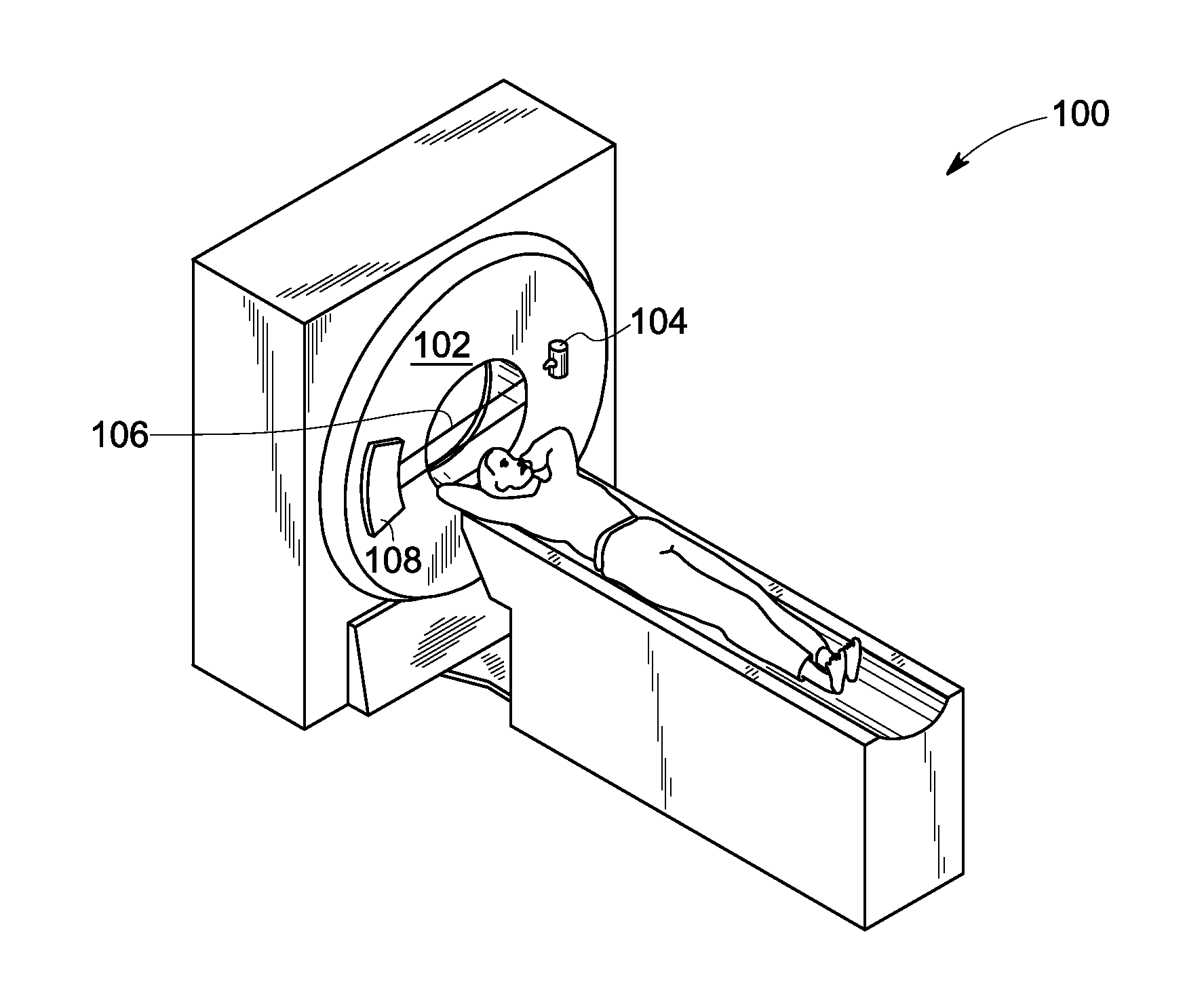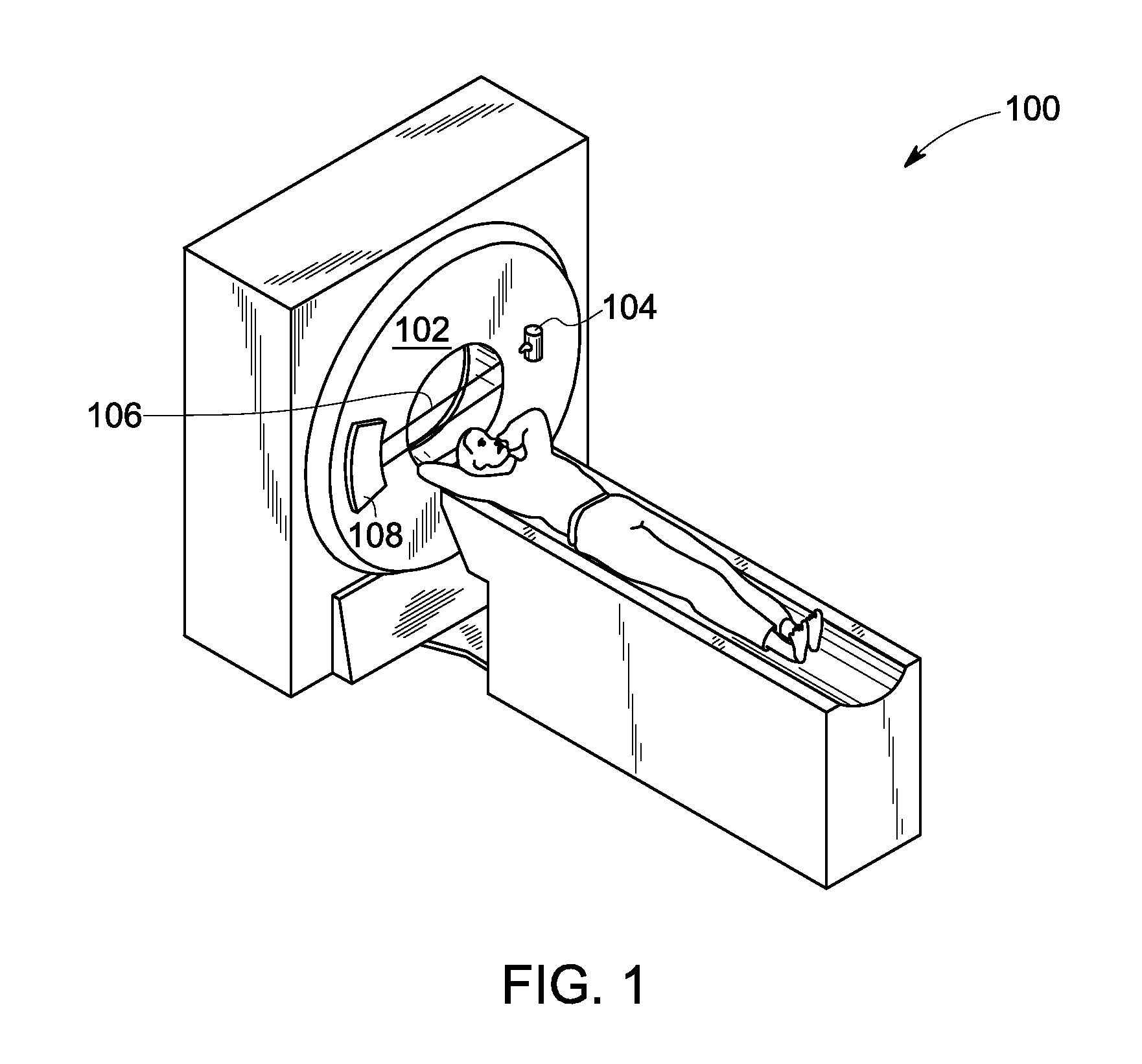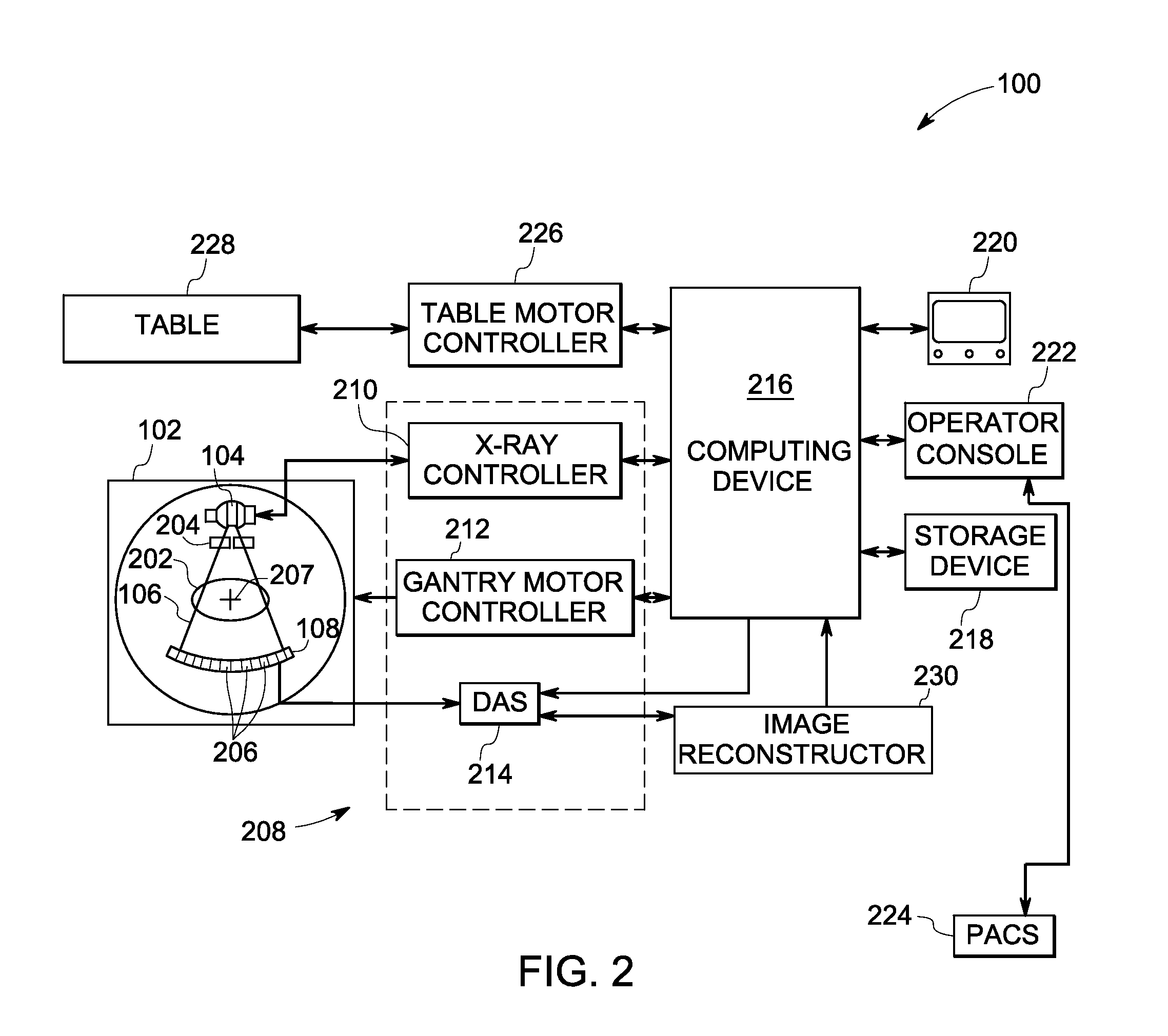Method and system for non-invasive imaging of a target region
a target region and imaging technology, applied in the field of non-invasive imaging of the target region, can solve the problems of image blurring, severe affecting clinical diagnosis, and difficult task of setting detector settings
- Summary
- Abstract
- Description
- Claims
- Application Information
AI Technical Summary
Benefits of technology
Problems solved by technology
Method used
Image
Examples
Embodiment Construction
[0016]The following description presents exemplary systems and methods for acquiring sufficient data for reconstruction of a high-resolution image of a targeted region of interest (ROI) of a subject. Particularly, embodiments illustrated hereinafter disclose imaging systems and methods for acquiring image data for enhanced image reconstruction of a targeted ROI. Although exemplary embodiments of the present technique are described in the context of a CT system, it will be appreciated that use of the present technique in various other imaging applications and systems is also contemplated. Some of these systems may include a positron emission tomography (PET)-CT scanner, a single or multiple source imaging system, a single or multiple detector imaging system, a single photon emission computed tomography (SPECT)-CT scanner and / or X-ray tomosynthesis systems.
[0017]Further, in addition to medical imaging, the techniques and configurations discussed herein are applicable in other non-inva...
PUM
 Login to View More
Login to View More Abstract
Description
Claims
Application Information
 Login to View More
Login to View More - R&D
- Intellectual Property
- Life Sciences
- Materials
- Tech Scout
- Unparalleled Data Quality
- Higher Quality Content
- 60% Fewer Hallucinations
Browse by: Latest US Patents, China's latest patents, Technical Efficacy Thesaurus, Application Domain, Technology Topic, Popular Technical Reports.
© 2025 PatSnap. All rights reserved.Legal|Privacy policy|Modern Slavery Act Transparency Statement|Sitemap|About US| Contact US: help@patsnap.com



